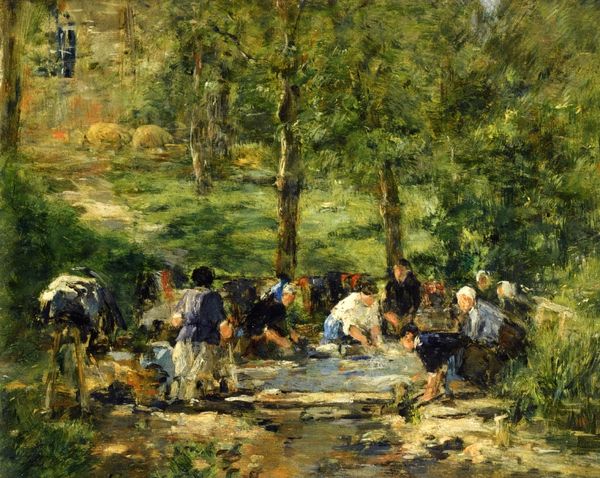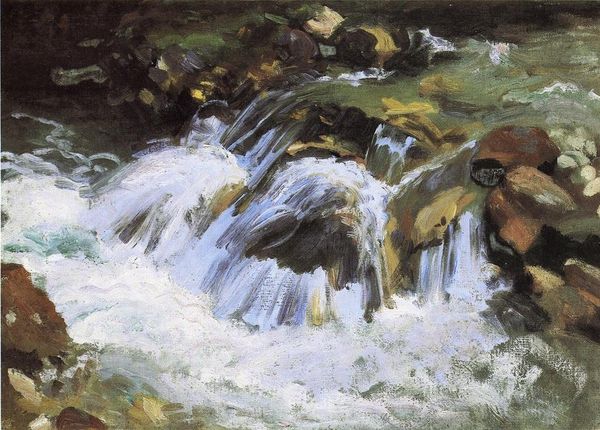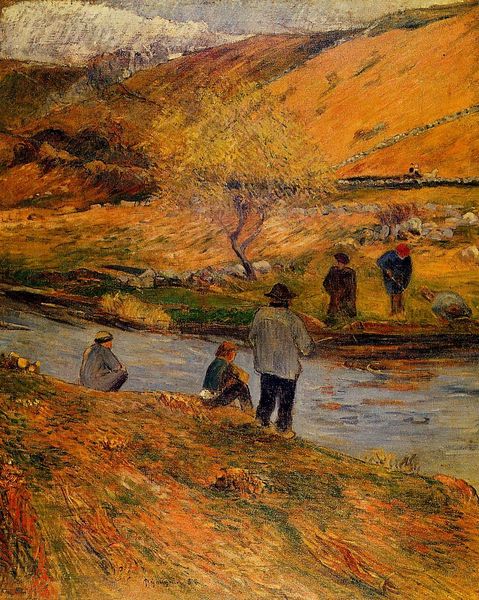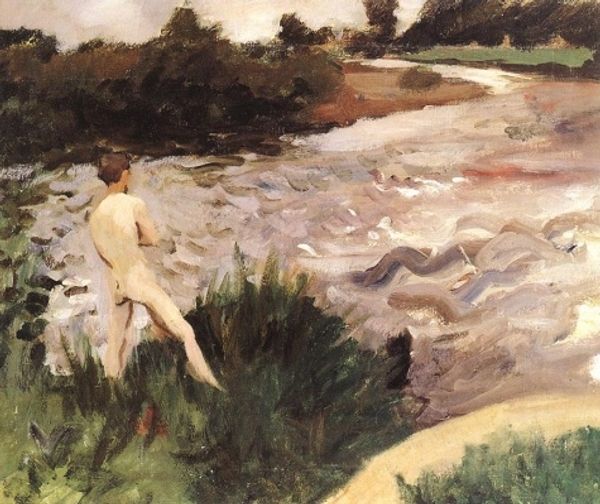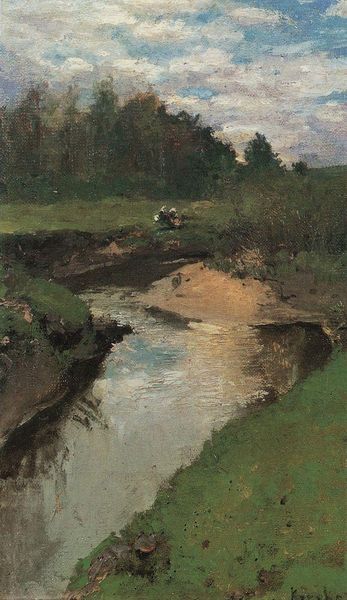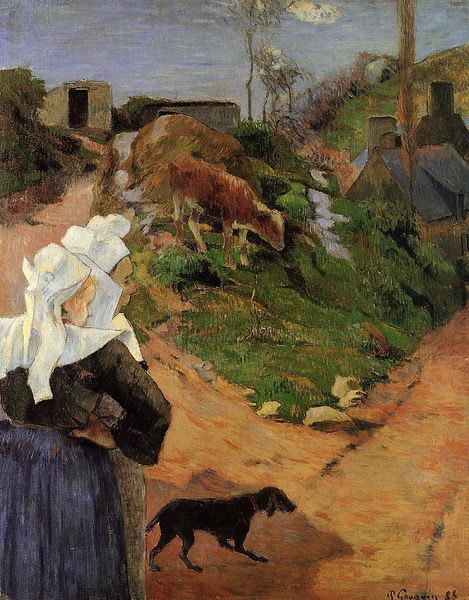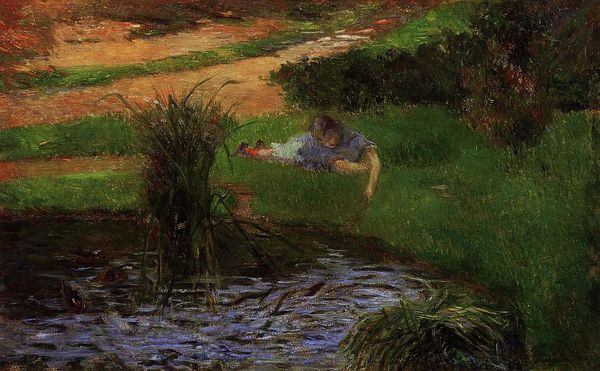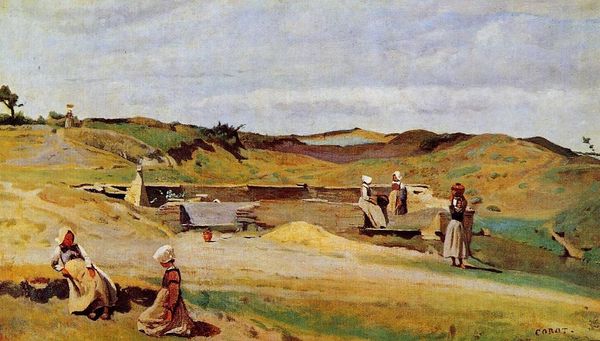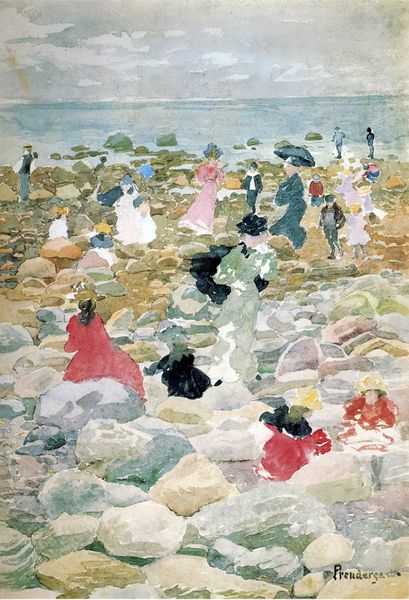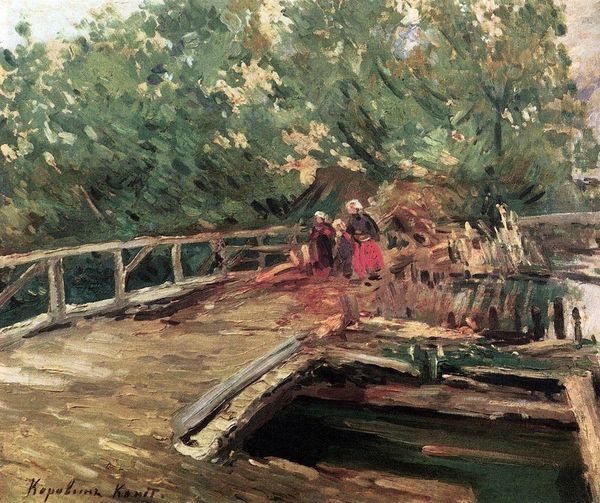
painting, plein-air, oil-paint
#
portrait
#
painting
#
impressionism
#
impressionist painting style
#
plein-air
#
oil-paint
#
landscape
#
impressionist landscape
#
oil painting
#
genre-painting
#
watercolor
Dimensions: 30.48 x 40.64 cm
Copyright: Public domain
Editor: Here we have John Singer Sargent's "Washerwomen," painted around 1880 using oil on canvas. It strikes me as a particularly direct and honest depiction of labor. What stands out to you in this piece? Curator: What’s compelling is to consider the material conditions surrounding this ‘impressionist landscape’. Sargent is using oil paint – a relatively new technology that allowed painters to work ‘en plein air’. This mobility coincided with expanding urban markets hungry for leisurely views of the countryside, yet, at the river's edge, we observe these women engaged in repetitive, physically demanding labor. Editor: So, you're saying the idyllic surface belies a deeper connection to the realities of the working class? Curator: Precisely. How are these materials sourced, and who controls the access and profits of mass production, even including clean clothes? Who are these ‘washerwomen’? Is it the leisure class consuming these genre scenes, and what assumptions were made when it was presented in bourgeois circles? Editor: That's a perspective I hadn't considered. It almost seems like Sargent is holding two conflicting ideas in the same frame: modern techniques and leisure on the one hand, and the timeless toil of labor on the other. Curator: Exactly. It makes us question what is really being consumed in that cultural context: idealized scenes of women in pastoral contexts. Also consider what he includes and, even more so, what he leaves out. By analyzing the process, the materials, and the cultural environment, we are no longer removed, passively considering art and consumption. Instead, it connects all levels of production for critical awareness. Editor: I will always think of this painting through those material questions now, which I truly appreciate. Curator: Likewise, the history is deeper by remembering that landscapes also tell a very particular social story of production and consumption.
Comments
No comments
Be the first to comment and join the conversation on the ultimate creative platform.
